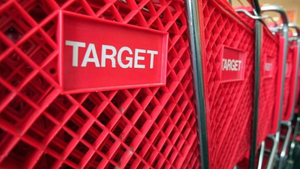Ice Breakers
Due to the hyper-thin margins they labor under, food retailers are famously loath to make changes in equipment or technology that has performed in an acceptable fashion even if seemingly better alternatives are available. That continues to be true for some of the systems used to manage refrigerated and frozen cases, which take up much of the space, and consume about half of the energy, in supermarkets.
October 4, 2010
MICHAEL GARRY
Due to the hyper-thin margins they labor under, food retailers are famously loath to make changes in equipment or technology that has performed in an acceptable fashion — even if seemingly better alternatives are available.

Steve Hagen
That continues to be true for some of the systems used to manage refrigerated and frozen cases, which take up much of the space, and consume about half of the energy, in supermarkets.
One example is the case controller, which is an electronic device attached to cold cases that manages everything from temperature, lighting and defrosting to electronic expansion valves, fans and anti-sweat heaters. Introduced in 1986 by many U.S. vendors, case controllers did not initially catch on due to their high cost, the immature state of the technology and the relatively low cost of energy.
“The timing was not right in the 1990s,” said Abtar Singh, vice president of global strategy and resources, Verisae, Minneapolis, a distributor of case controllers. Since 1992, he noted, the cost of case controllers has dropped from $2,000 to $500 per case and the technology has vastly improved. But adoption of case controllers is still minimal in the U.S., despite widespread adoption in Europe.
Still, there are new signs of interest. At the Food Marketing Institute's Energy & Store Development Conference in Minneapolis last month, Steve Hagen, director of national procurement, Fresh & Easy Neighborhood Market, discussed why his chain has invested in case controllers during a session with Singh called “The Case for Case Controllers — Yet Again!” Hannaford Bros., Scarborough, Maine, is another chain that has installed these devices.
FROM THE GET-GO
El Segundo, Calif.-based Fresh & Easy, which last month received SN's 2010 Sustainability Excellence Award in the chain category, operates 168 small-format stores in California, Nevada and Arizona. The 14,000-square-foot stores incorporate a larger amount of refrigeration per square foot than most supermarkets. Since opening its first store in California in November 2007, the Tesco-owned chain has used case controllers as well as electronic expansion valves, which regulate the flow of refrigerant and are overseen by the controllers.
“Our business wanted a prototype store that was environmentally responsible and more efficient than anyone else,” Hagen said during his crowded FMI session. Case controllers represented an opportunity to have more than an incremental impact on energy costs. Indeed, Fresh & Easy stores now use about 30% less energy than a typical supermarket, according to Southern California Edison's Savings by Design program.
“When we looked at Europe or anywhere where energy costs shot way up, everybody was using case controllers and electronic expansion valves. It was impossible to find a chain not using it,” said Hagen. “I decided that was a reason for us to do it.” Fresh & Easy employs case controllers from Resource Data Management, based in Scotland; Verisae is the U.S. distributor of the product. The chain uses Pulse electronic expansion valves.
Initially, Hagen thought that Fresh & Easy would be paying a premium for installing case controllers. But in calculating the electrical, installation and start-up savings, it turned out that the initial investment in case controllers was less than for a conventional set-up with electrical and control system wiring routed from cases to compressor/electrical rooms, he said.
Because most of the electronic components reside at the case with case controllers, their installation requires fewer electrical cables and panels, and fewer temperature sensor cables; Fresh & Easy found it could use 26% less high-voltage wiring and 83% less low-voltage wiring than in a conventional store.
Moreover, case controllers support a refrigerant piping configuration known as “loop piping,” which enables Fresh & Easy to use 40% less piping in its stores, as well as less insulation, than a conventional piping set-up. Less piping results in less pipe soldering, helping Fresh & Easy to have a comparatively low 10% refrigerant leak rate.
In addition, case controllers use electronic expansion valves rather than conventional thermostatic expansion valves, which have to be adjusted manually at installation and thereafter. All this means that “starting a case-controller store can take half the time compared to a [conventionally] controlled store,” Singh said.
In a study of what case controllers cost at Fresh Easy, En Reps, Phoenix, compared the cost of a store with case controllers to the cost of a store with conventional controls; the additional cost of the case controllers was $5,502, covering 22 cases.
Lots of Data
On an ongoing basis, case controllers provide case-specific data on temperature, defrost and other parameters — more than what conventional back-room controls offer. “With case controllers, you know how every case is performing,” said Hagen. “The more data we get, the more energy we save, because the more things we see wrong.” The chain uses a third-party firm to monitor its cases via the Web but the controllers also signal problems to store employees. “When there's a problem, it's hard not to notice,” he said.
To achieve its diagnostic power, case controllers employ four temperature sensors per case as compared with conventional set-ups that use only one sensor for multiple cases because of the cost of wiring to the back room. “You can be 95% sure of what the problem is and often fix it remotely,” said Singh. Moreover, iced conditions in the case evaporator can be detected without removing product, and temperature and lighting changes can be made to accommodate merchandising needs. The chain also uses case controllers to monitor that store employees are covering open cases with “night blinds” when a store is closed.
The electronic expansion valves used with case controllers provide tighter control of “superheat” — a critical measure of refrigeration performance — than conventional valves, preventing compressor mishaps and saving energy, Singh said. Fresh & Easy's parent Tesco found that electronic valves use about 15% less energy than mechanical valves that are only set when there are problems in the cases, 3% to 5% less than mechanical valves regularly maintained, said Hagen. The electronic valves also allow the compressors to work at a lower pressure in colder climates, thereby saving energy. In addition, electronic valves do not require the periodic fine-tuning associated with mechanical valves.
Singh also pointed out the food safety advantages resulting from case controllers' ability to control temperature and display it digitally at the case level. Fresh & Easy has experienced “limited product loss” during its four-year operation, said Hagen.
Food Lion is an example of a chain that continues to use conventional case monitoring technology from the back room of stores. “We already achieve a certain amount of energy savings with our current controls,” said Wayne Rosa, energy and maintenance manager for Food Lion, Salisbury, N.C. “We're controlling lighting, fans, and anti-sweat heaters. So with case controllers, you're investing a huge amount of money and getting 5% more energy savings. Is it worth the investment?”
Another factor is that Food Lion's in-house technicians are not accustomed to case controllers. “We try to bring in technology we know we can support with our in-house maintenance staff,” said Rosa.
Food Lion also employs conventional thermostatic expansion valves in its cases rather than electronic expansion valves. “We have a process to check the [expansion valves] a minimum of twice a year,” said Rosa. “Our superheats are in line with those of electronic expansion valves.”
About the Author
You May Also Like






